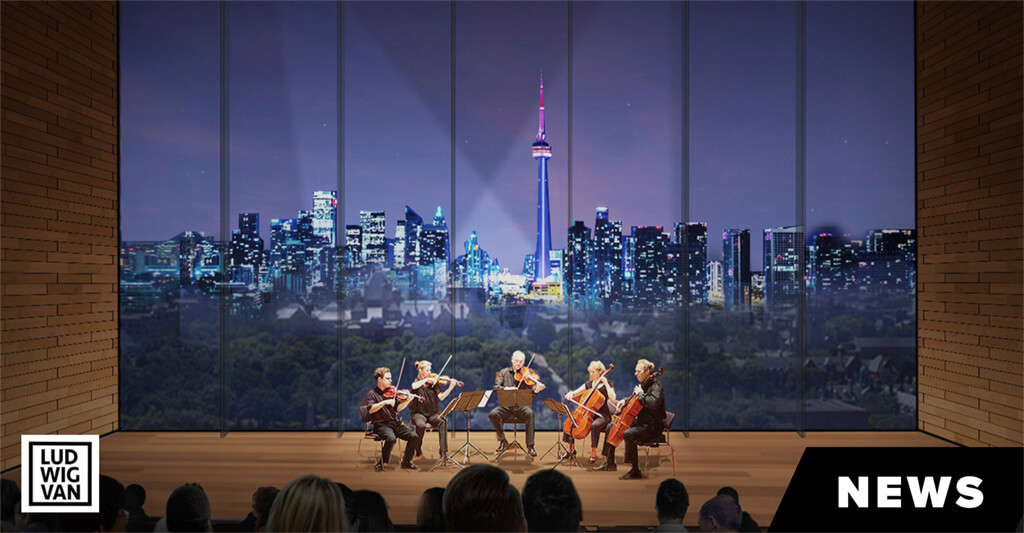
Housing multiple disciplines, and blending academic and public space, a proposed University of Toronto complex may soon offer a notable new addition to the view as you head northbound on Queen’s Park Crescent.
How does a university go about connecting with the neighbourhood and city they are located in? In leaving the proverbial ivory tower, establishing a physical presence that bridges the gap between the university campus and the city it inhabits is significant in itself. That’s part of the impetus behind the design of the structure which will — not coincidentally — be situated just where the University campus blends into the neighbourhood. Blending old and new architecture, the striking building that is being touted as a future landmark for the University promises to serve as a hub for scholarship and community engagement through culture.
The proposed design comes from noted New York City based firm Diller Scofidio + Renfro, responsible for the high-profile High Line project in NYC, and the Institute of Contemporary Art in Boston. They’ll be working with Toronto firm architectsAlliance, with ERA Architects serving as heritage consultants.
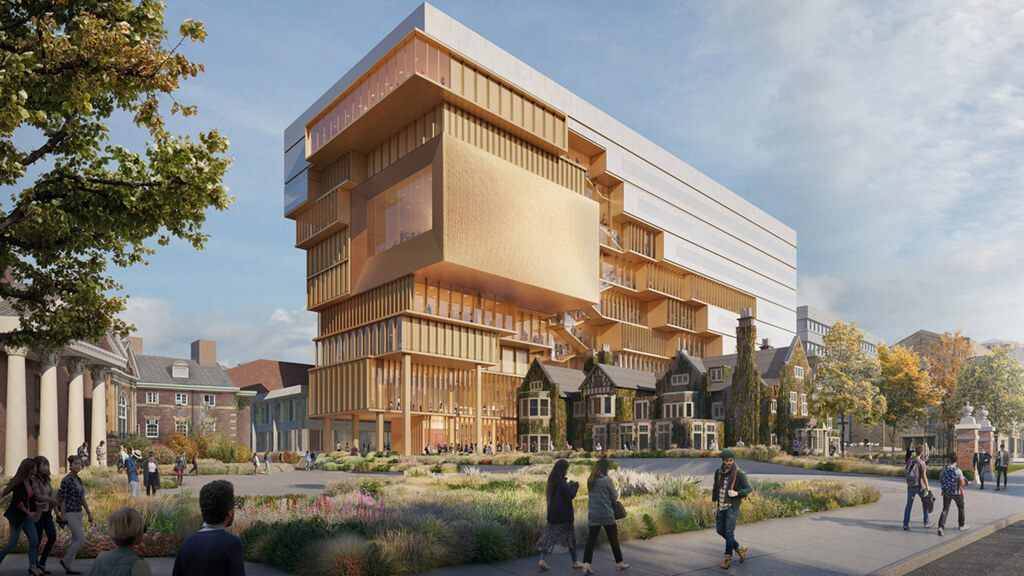
The structure will occupy the site of the former McLaughlin Planetarium, closed since 1995, at 90 Queen’s Park Crescent, and incorporate Falconer Hall, a designated heritage building. The venerable structure is part of the Faculty of Law, and represents just one of several disciplines that will be housed in the building in a “campus within a campus” model. The Faculties of Music and Arts & Science will have a presence in the proposed building, representing a number of disciplines including history, Near and Middle Eastern civilizations, and the Institute of Islamic Studies. The School of Cities will have a permanent home in the building — a natural fit for its focus on research, education, and outreach in urban settings.
In connecting with the neighbourhood and city, the focus is both local and global. Scott Mabury, U of T’s vice-president, operations and real estate partnerships, is quoted in a media release. “It will be a building that brings a diverse grouping of folks together to advance knowledge around cities and how they can work successfully, contributing to a positive impact here in the city but also more globally.”
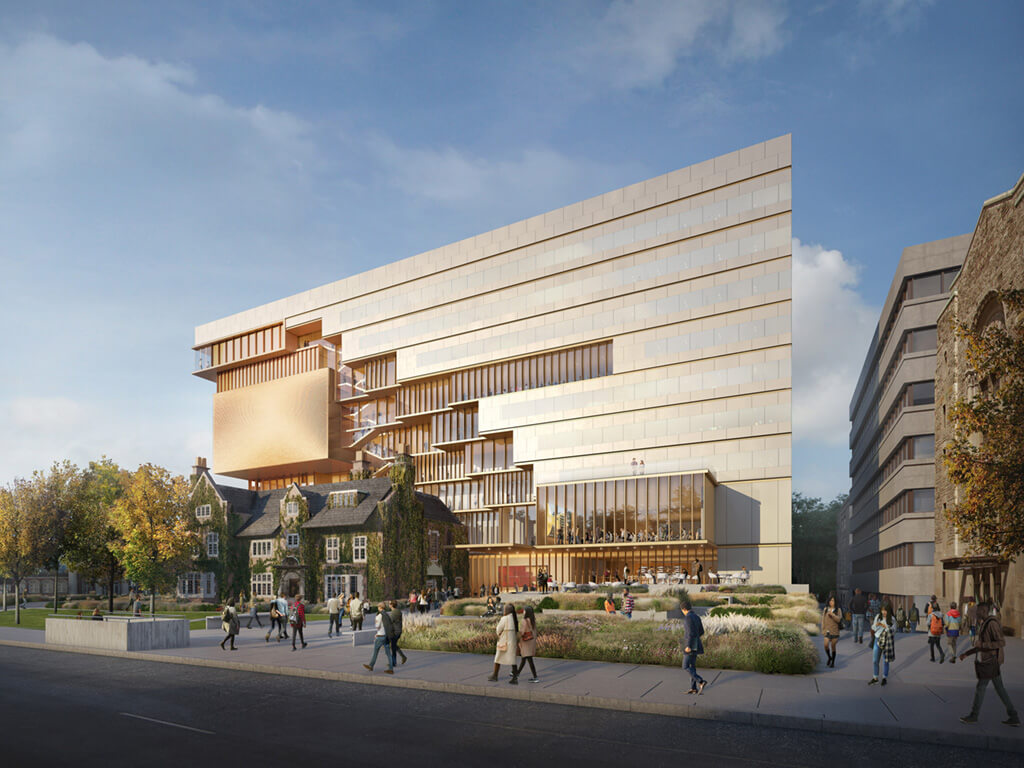
The exterior is designed to impress, a gleaming and golden nine-storey modern structure that plays with varied textures that catch the light, with the venerable 118-year old Falconer Hall and its gardens in front, facing Queen’s Park Crescent.
Inside, there will be classrooms, public spaces, and space designated to the Royal Ontario Museum, building on the city’s Bloor Street cultural corridor. One of the more exciting additions from a public perspective is a recital hall with a large window that serves as a backdrop for the stage with iconic south-facing views of the Toronto skyline. Just upstairs from the hall, there will be a 400-seat event space with the same picturesque view.
Other public spaces include a ground floor café, and an atrium that winds its way up through several stories, leading to the recital hall. The design aesthetic incorporates the premise of the building and its purpose. The stairway will link all nine floors, with meeting spaces, lounges, and study rooms clustering around the atrium. The idea is to create a flow that mixes all the different groups who will be using the building.
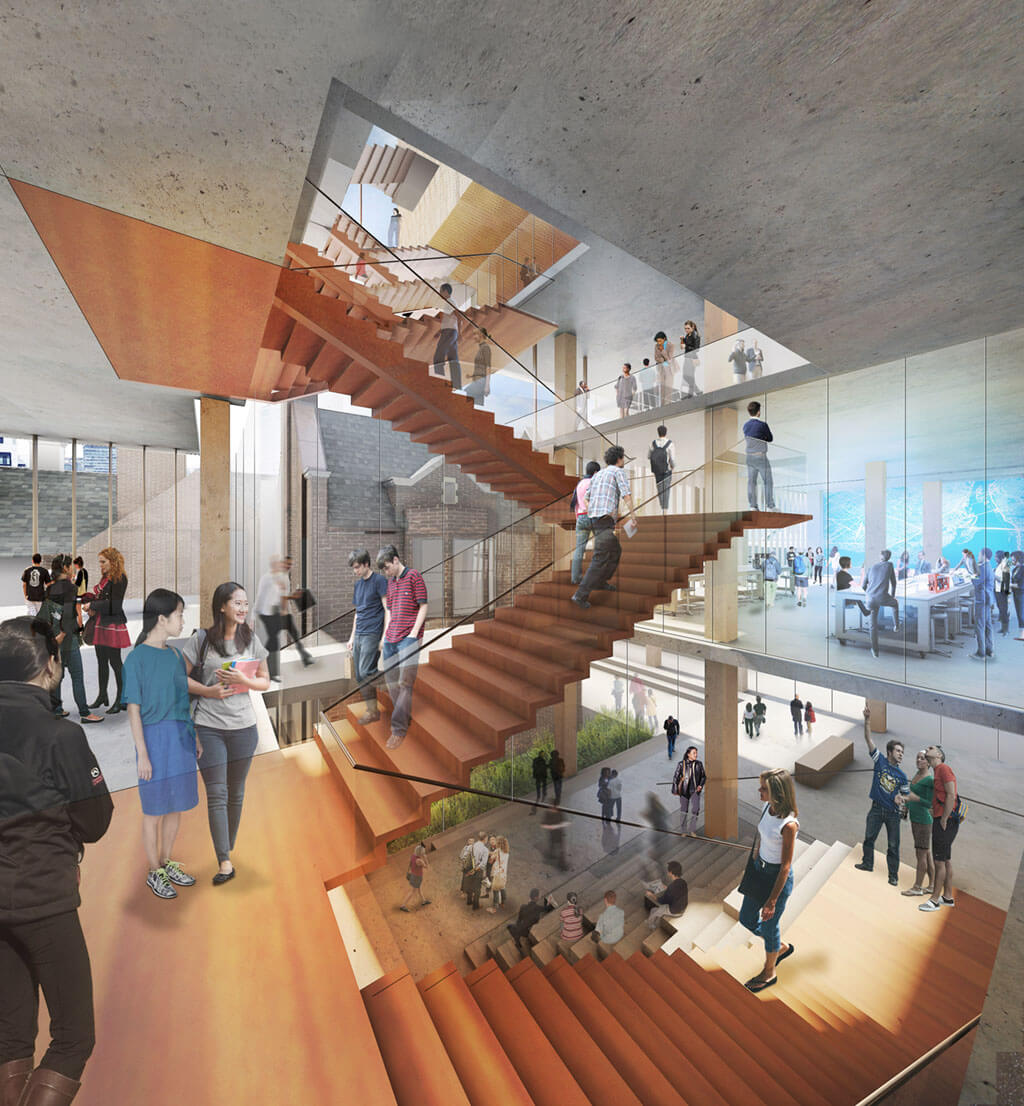
“Because the building is a large and complex site, the experience doesn’t just play out on the ground floor, it climbs through in a kind of spiral up until the performance space.” Richard Sommer, dean of the John H. Daniels Faculty of Architecture, Landscape, and Design and a member of the university’s Design Review Committee is quoted in a media release.
The structure will meet the ASHRAE (American Society of Heating, Refrigerating and Air-Conditioning Engineers’) sustainability standards, and will use about 40 percent less energy than a typical structure of this type and size built with conventional methods. It’s part of the University’s commitment to sustainable growth.
The proposal will come under consideration by the university governance.
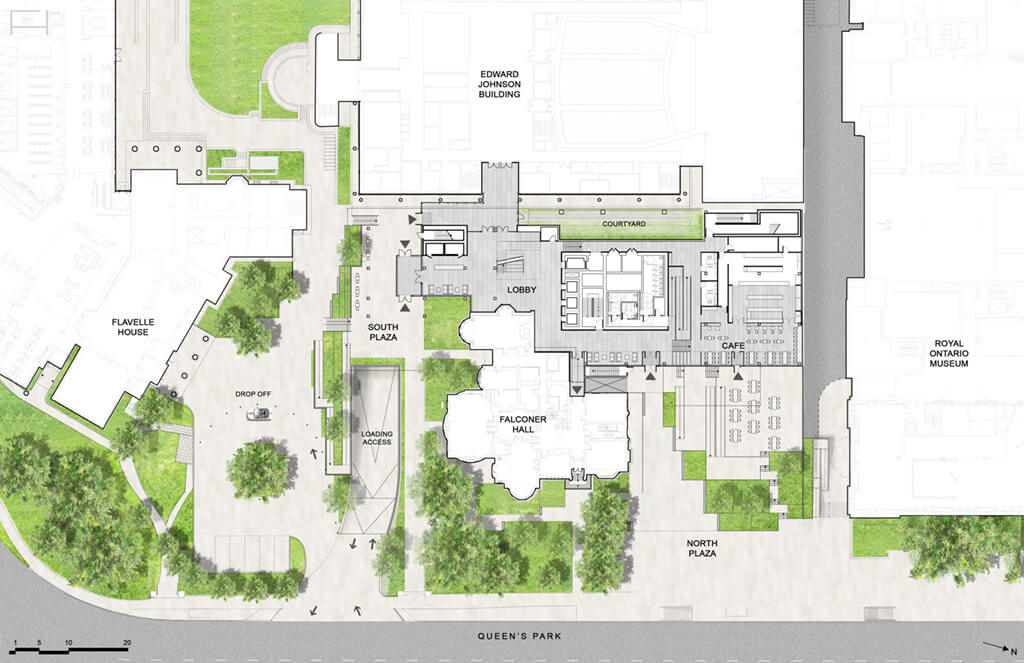
LUDWIG VAN TORONTO
Want more updates on Toronto-centric classical music news and reviews? Follow us on Facebook or Twitter for all the latest.
- THE SCOOP | The Glenn Gould Foundation Receives $12 Million Funding In Federal Budget - April 19, 2024
- THE SCOOP | Conductor Yannick Nézet-Séguin Receives Honorary Fellowship From Royal Conservatory - April 19, 2024
- INTERVIEW | Larry Weinstein Talks About His Film Beethoven’s Nine: Ode To Humanity, Premiering At Hot Docs - April 18, 2024



